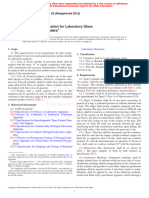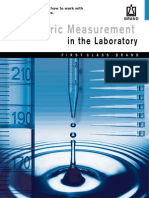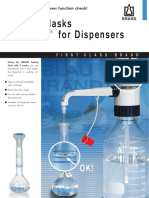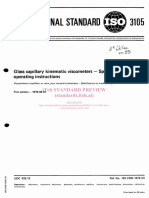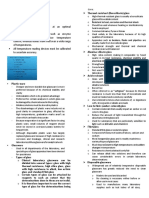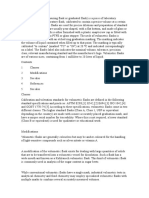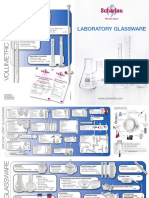0% found this document useful (0 votes)
67 views2 pagesFlask Specification
The document provides a general specification template for laboratory glass flasks, including types such as conical, volumetric, and round-bottom flasks. Key parameters include material (borosilicate glass), capacity range, graduation markings, heat and chemical resistance, and compliance with various standards. It also mentions optional features like caps and certification details for accuracy and labeling.
Uploaded by
shabbirCopyright
© © All Rights Reserved
We take content rights seriously. If you suspect this is your content, claim it here.
Available Formats
Download as DOCX, PDF, TXT or read online on Scribd
0% found this document useful (0 votes)
67 views2 pagesFlask Specification
The document provides a general specification template for laboratory glass flasks, including types such as conical, volumetric, and round-bottom flasks. Key parameters include material (borosilicate glass), capacity range, graduation markings, heat and chemical resistance, and compliance with various standards. It also mentions optional features like caps and certification details for accuracy and labeling.
Uploaded by
shabbirCopyright
© © All Rights Reserved
We take content rights seriously. If you suspect this is your content, claim it here.
Available Formats
Download as DOCX, PDF, TXT or read online on Scribd
/ 2






















